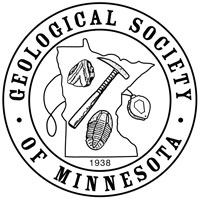Seminar Lab Date:
Seminar Lab presenter:
Seminar Lab Subject:
Seminar Lab Location :
Location: University of Minnesota East Bank campus,
Tate Hall, 116 Church St. SE, Minneapolis MN 55455
Room 105. MAP
Written Direction
Seminar Lab Details:
Summary:
When you wade into a Minnesota lake, did you ever wonder what the mud between your toes is made of? The tiny microfossils, mineral fragments, debris, and microbes that make up lake mud are more than just a beautiful soup of microscopic garbage - they can also tell us about the past. Layers of lake mud build up over millennia and record the conditions in and around each lake, and lake sediment core samples are used to understand past climate, ecology, nutrient levels, and many other things. One of the world's premier lake core facilities is here in the UMN Department of Earth Sciences - CSDCO/LacCore, which hosts some 400 visiting scientists and students every year, bringing cores from all around the world, and is supported by the National Science Foundation. This talk will review some of the projects we are working on, as well as the nuts and bolts of how our small staff have built our facilities enable all researchers who use cores to do the best possible science for the least money.
If people would like a tour of the lab after the talk, it's just across the hall (175 Tate)!
Biography:
Amy Myrbo is a researcher in the Department of Earth Sciences and the Director of Outreach, Diversity, and Education for CSDCO/LacCore. She grew up in the Midway area of St. Paul reading about dinosaurs and other big weird extinct critters, but then went on to work at record stores and study English literature at UMN. Luckily, she took Earth History to satisfy a science requirement - and went on to get her Ph.D. in Geology, also at UMN. She couldn't be happier with the long series of serendipitous events that has brought her here, studying wild rice and sulfate with the Minnesota Pollution Control Agency, doing research with students, and working in the Upper Midwest, Glacier National Park, and the Bahamas. She is passionate about broadening participation in the geosciences, and was recently honored to be made a Fellow of the UMN Institute on the Environment (IonE). In September 2017 she was diagnosed with breast cancer, which has caused her to slow down (a little) to smell the flowers.
